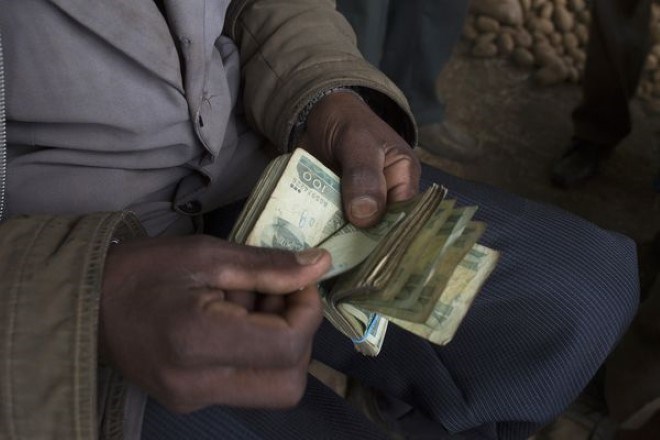
Thursday September 22, 2022
By Fasika Tadesse
Gap between informal and official exchange rates hits record

Ethiopian birr banknotes.Photographer: Simon Dawson/Bloomberg
The gap between the Ethiopian currency’s official and parallel-market exchange rates widened to a record as foreign reserves dwindled and fighting in the country’s north resumed.
On Wednesday, the birr traded as high as 92 a dollar on the black market, while the official rate remained at 52.5, according to people familiar with the matter who asked not to be identified speaking about the parallel market.
The exchange-rate gap is widening mainly due to heightened risk surrounding the ongoing conflict in the country, Fikadu Digafe, vice governor and chief economist at the central bank, said in a phone interview. He declined to directly comment about the unofficial exchange rate.
The imbalance between foreign-currency supply and demand is problem, he said, adding that government monetary policies are less effective due to the high cost of the near two-year war with the dissident northern Tigray region.
A truce agreed to in March ended in August, worsening the humanitarian and economic situation in Africa’s second-most populous country.
The International Monetary Fund in June said Ethiopia’s economic growth may slow to 3.8% in 2021-22, because of the conflict, lower agricultural production, a fall in donor financing and intensifying foreign exchange shortages, drought, and spillovers from the war in Ukraine.
Ethiopia’s foreign-exchange reserves stood at $3.3 billion at the end of 2021, covering just 1.9 months of the country’s import costs, according to an East Africa Macroeconomic Outlook published by Deloitte LLP. Meanwhile, inflation soared to 32.5% in August.
Loans from Ethiopia’s lenders were about $1.09 billion in the fiscal year through July, compared with $3.33 billion in 2019-20.
To shore up foreign reserves, the government has been trimming the value of the birr against the dollar since 2019. Between February and May, Ethiopia’s central bank depreciated the local currency by a weighted average rate of 26%.